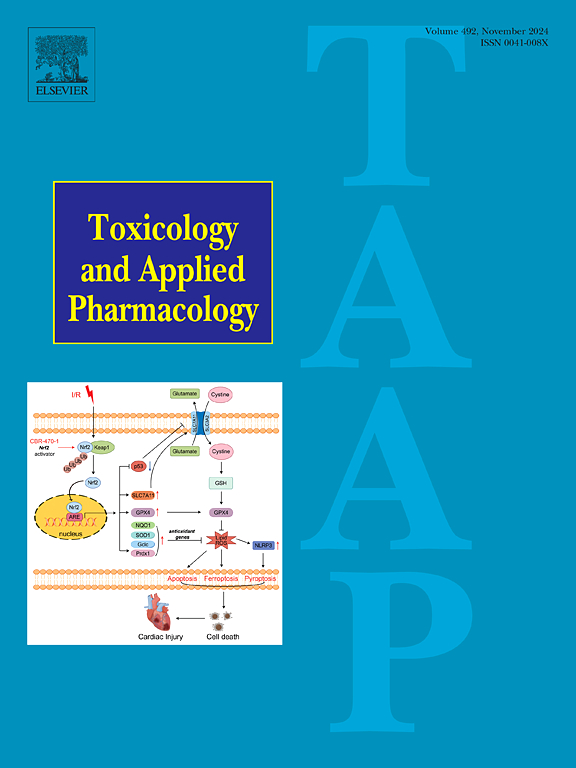AnxA2-EGFR pro-inflammatory signaling potentiates EMT-induced fibrotic stress and its modulation by short-chain fatty acid butyrate in idiopathic pulmonary fibrosis
IF 3.3
3区 医学
Q2 PHARMACOLOGY & PHARMACY
引用次数: 0
Abstract
Idiopathic pulmonary fibrosis (IPF) is a debilitating lung disease characterized by excessive extracellular matrix deposition, leading to irreversible lung scarring. This study explores the underlying molecular mechanisms of IPF and delves into membrane-anchored synergism between EGFR and AnxA2, which amplifies fibrotic stress and plays a pivotal role in promoting pulmonary fibroblast activation and fibrosis. Indeed, these interactions create a synergistic effect that promotes the loss of epithelial traits and the transition to a mesenchymal phenotype, thereby contributing to fibrotic stress and disease progression. In addition, this study also explores the potential of butyrate, a short-chain fatty acid, as a therapeutic agent in reducing fibrotic stress by modulating AnxA2-EGFR signaling. Pre-treatment with butyrate significantly dampens AnxA2-EGFR signaling and Galectin-3 expression, effectively curbing prolonged EGFR phosphorylation. The suppression of upstream signaling leads to a reduction in the angiogenic marker VEGF and a decrease in pro-inflammatory mediators such as TNF-α and IL-6. Collectively, our findings highlight the critical role of EGFR-AnxA2 signaling and Galectin 3 in the pathogenesis of IPF, and highlight butyrate as a potential therapeutic agent for alleviating fibrotic stress.

在特发性肺纤维化中,AnxA2-EGFR促炎信号增强了emt诱导的纤维化应激及其由短链脂肪酸丁酸盐调节
特发性肺纤维化(IPF)是一种使人衰弱的肺部疾病,其特征是细胞外基质过度沉积,导致不可逆的肺瘢痕形成。本研究探讨了IPF的潜在分子机制,并深入研究了EGFR和AnxA2之间膜锚定的协同作用,这种协同作用放大了纤维化应激,在促进肺成纤维细胞活化和纤维化中起着关键作用。事实上,这些相互作用产生协同效应,促进上皮性状的丧失和向间充质表型的转变,从而促进纤维化应激和疾病进展。此外,本研究还探讨了丁酸盐作为一种短链脂肪酸,通过调节AnxA2-EGFR信号通路来减轻纤维化应激的治疗潜力。丁酸预处理可显著抑制AnxA2-EGFR信号传导和半乳糖凝集素-3的表达,有效抑制EGFR磷酸化的延长。上游信号的抑制导致血管生成标志物VEGF的减少和促炎介质如TNF-α和IL-6的减少。总之,我们的研究结果强调了EGFR-AnxA2信号和Galectin 3在IPF发病机制中的关键作用,并强调了丁酸盐作为缓解纤维化应激的潜在治疗药物。
本文章由计算机程序翻译,如有差异,请以英文原文为准。
求助全文
约1分钟内获得全文
求助全文
来源期刊
CiteScore
6.80
自引率
2.60%
发文量
309
审稿时长
32 days
期刊介绍:
Toxicology and Applied Pharmacology publishes original scientific research of relevance to animals or humans pertaining to the action of chemicals, drugs, or chemically-defined natural products.
Regular articles address mechanistic approaches to physiological, pharmacologic, biochemical, cellular, or molecular understanding of toxicologic/pathologic lesions and to methods used to describe these responses. Safety Science articles address outstanding state-of-the-art preclinical and human translational characterization of drug and chemical safety employing cutting-edge science. Highly significant Regulatory Safety Science articles will also be considered in this category. Papers concerned with alternatives to the use of experimental animals are encouraged.
Short articles report on high impact studies of broad interest to readers of TAAP that would benefit from rapid publication. These articles should contain no more than a combined total of four figures and tables. Authors should include in their cover letter the justification for consideration of their manuscript as a short article.

 求助内容:
求助内容: 应助结果提醒方式:
应助结果提醒方式:


